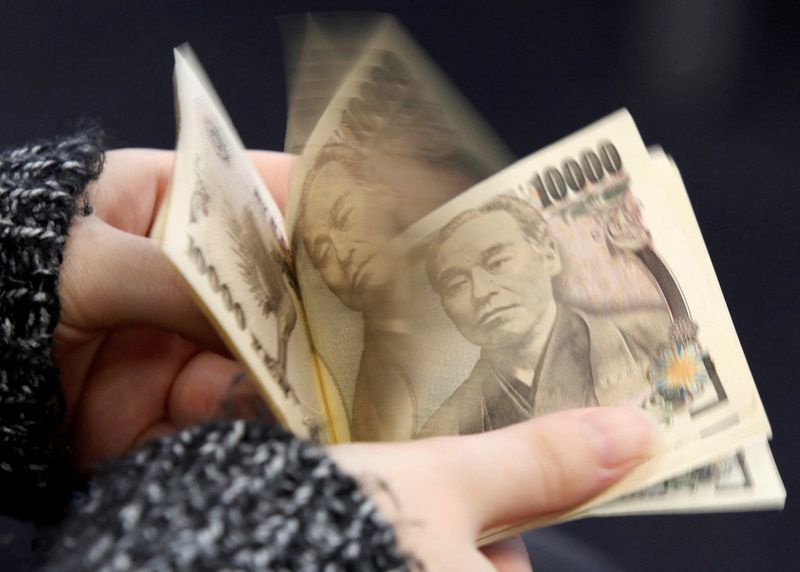Forex
Euro drops after weak business activity data, central banks in focus


© Reuters. FILE PHOTO: A woman counts Japanese 10,000 yen notes in Tokyo, in this February 28, 2013 picture illustration. REUTERS/Shohei Miyano/Illustration
By Tom Westbrook and Alun John
SYDNEY/LONDON (Reuters) – The euro slid on Monday after activity data in key economies came in much softer than expected, giving markets a jolt at the start of a week packed with central bank meetings at which investors expect rate hikes in Europe and the United States.
The European common currency fell 0.4% to $1.1083, skidding after a quiet Asian session on PMI data that showed euro zone business activity shrank much more than expected in July.
The pound dropped after British activity data, but less dramatically and was last down 0.1% at $1.2839.
Simon Harvey, head of FX analysis at Monex Europe, said slower euro zone growth would reduce the likelihood of “the portfolio inflows needed to take the euro back to its pre Ukraine war ranges of $1.12 to $1.20”.
There is plenty more for investors to watch this week – the Federal Reserve concludes a meeting on Wednesday, followed by the European Central Bank (ECB) a day later and the Bank of Japan on Friday, as well as earnings from many heavyweight companies.
Investors expect both the ECB and Fed to raise rates by 25 basis points and the focus in both cases is on the signals they send around their September meetings. Softening inflation gauges might allow the Fed room to hint at a pause.
“The last week left markets believing in a soft-landing scenario for the U.S. markets where the (Fed) ends its hikes … and then sees a steady drop in CPI without a recession,” said Bob Savage, head of markets strategy at BNY Mellon (NYSE:).
The Bank of Japan (BOJ) is the most likely of the three central banks to throw up a market-moving surprise, traders say, with a tweak to its yield curve control policy seen as a possibility.
The yen strengthened with the dollar down 0.47% at 141.2 yen, and the euro down 0.7% at 156.6 yen.
Last Friday the Japanese currency dived to as weak as 141.92 per dollar, also sliding on crosses, following a Reuters report that the BOJ was leaning towards keeping its yield curve control policy unchanged, though volatility gauges have spiked as the meeting looms.
“If the BOJ adjusts its YCC programme, financial markets will likely take it as the start of a policy tightening cycle regardless of the BOJ’s rationale. Under such a scenario we consider and can lose about 2‑4 yen on the day,” analysts at Commonwealth Bank of Australia (OTC:) wrote.
The Swiss franc was steady at 0.8648 per dollar, and the was up 0.1% at 101.2.

 Forex3 years ago
Forex3 years agoForex Today: the dollar is gaining strength amid gloomy sentiment at the start of the Fed’s week

 Forex3 years ago
Forex3 years agoUnbiased review of Pocket Option broker

 Forex3 years ago
Forex3 years agoDollar to pound sterling exchange rate today: Pound plummeted to its lowest since 1985

 Forex3 years ago
Forex3 years agoHow is the Australian dollar doing today?

 Cryptocurrency3 years ago
Cryptocurrency3 years agoWhat happened in the crypto market – current events today

 World3 years ago
World3 years agoWhy are modern video games an art form?

 Commodities3 years ago
Commodities3 years agoCopper continues to fall in price on expectations of lower demand in China

 Economy3 years ago
Economy3 years agoCrude oil tankers double in price due to EU anti-Russian sanctions





















